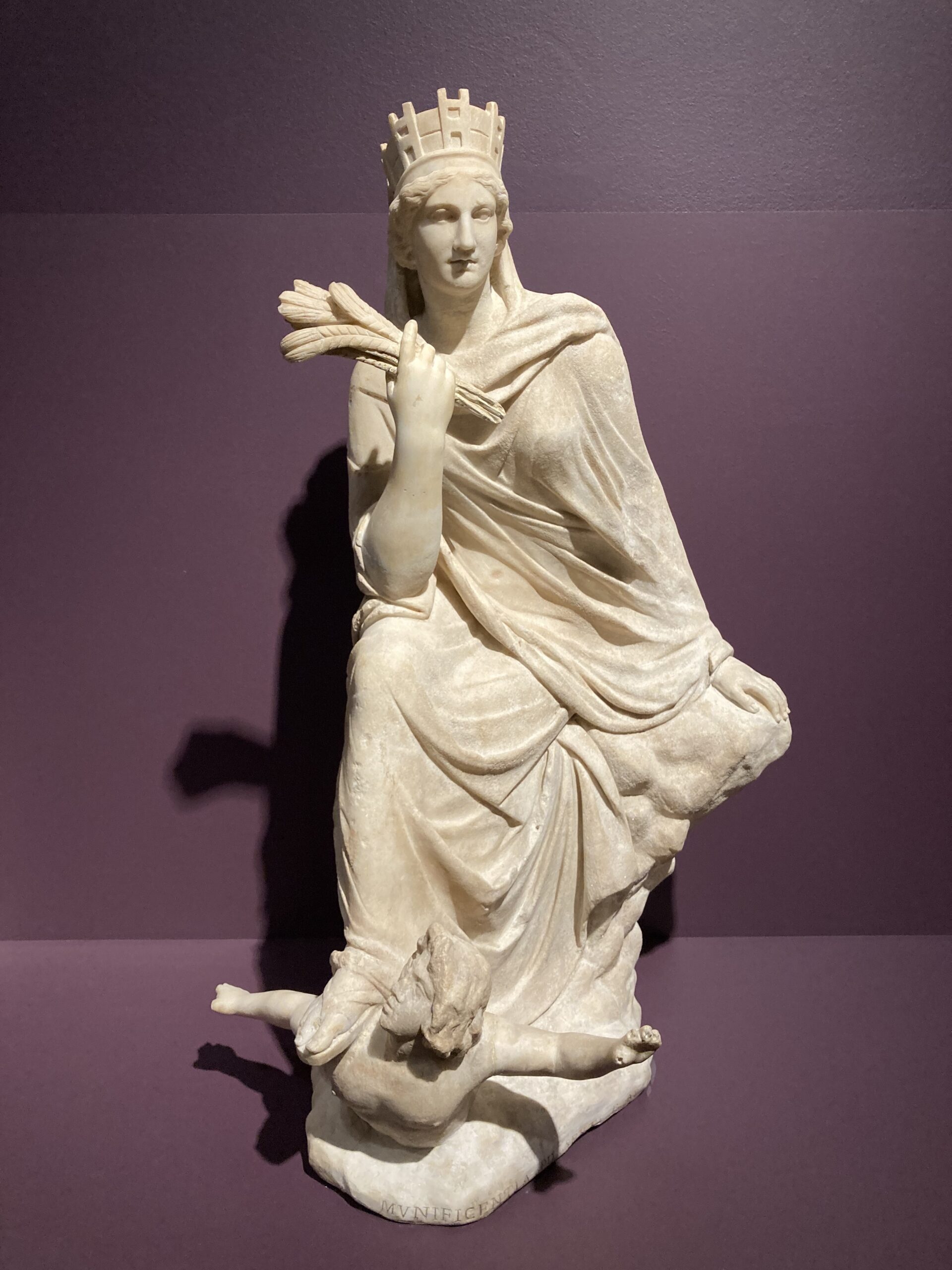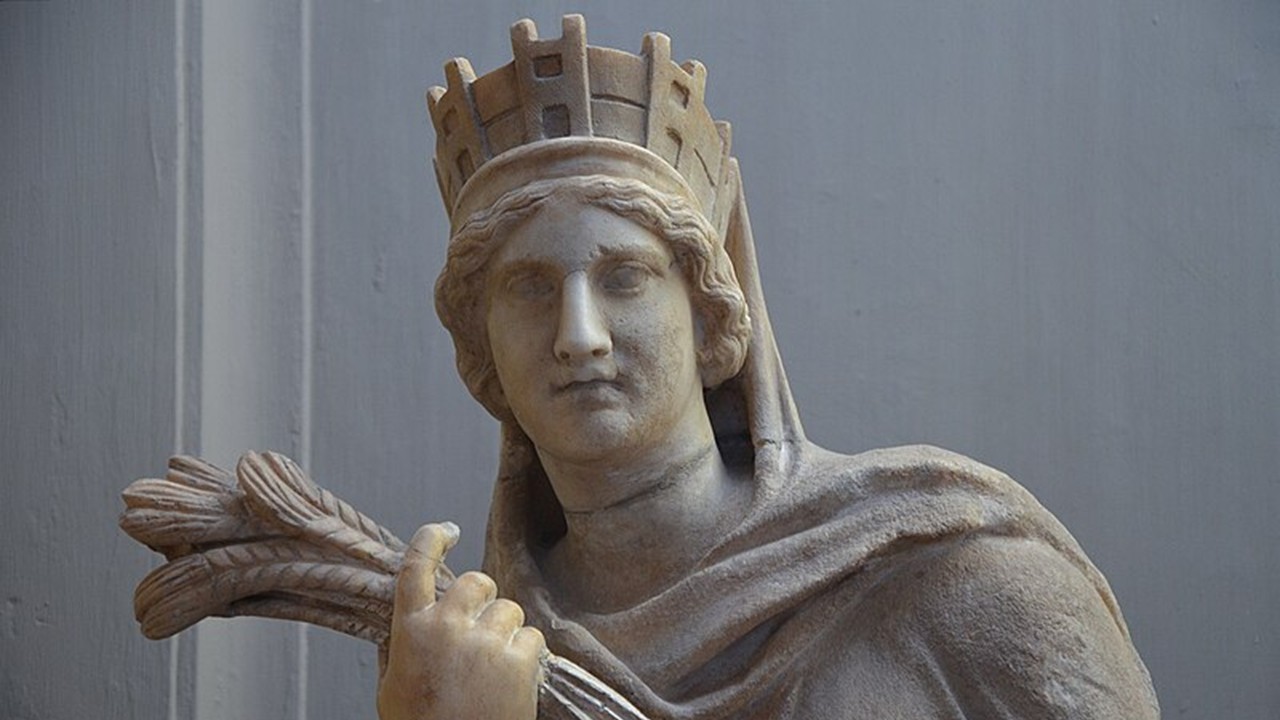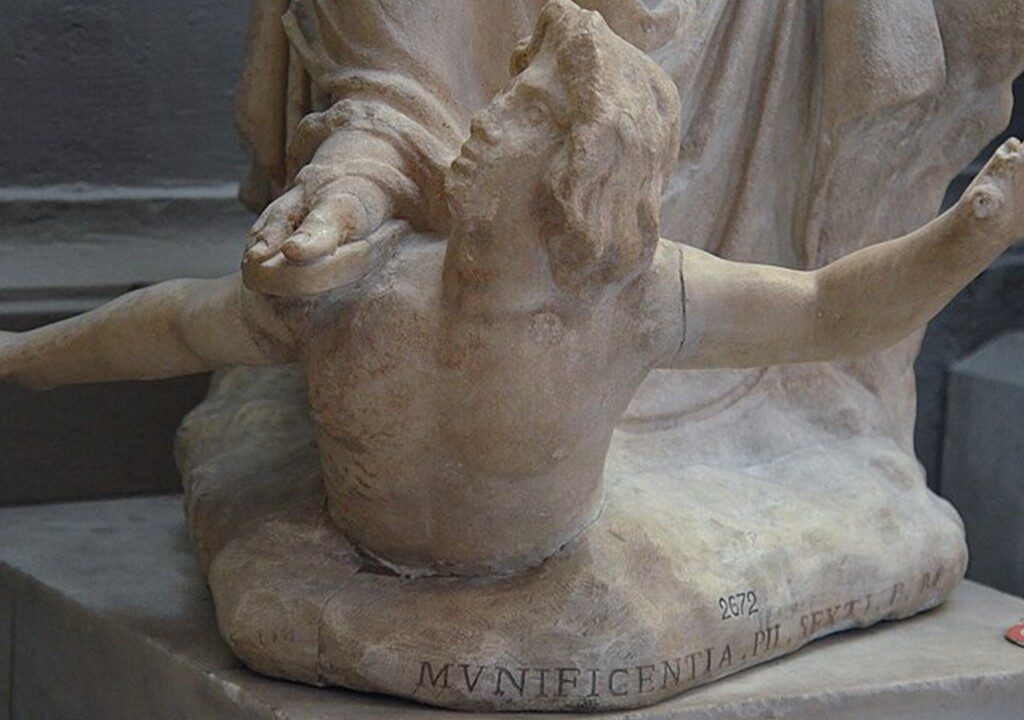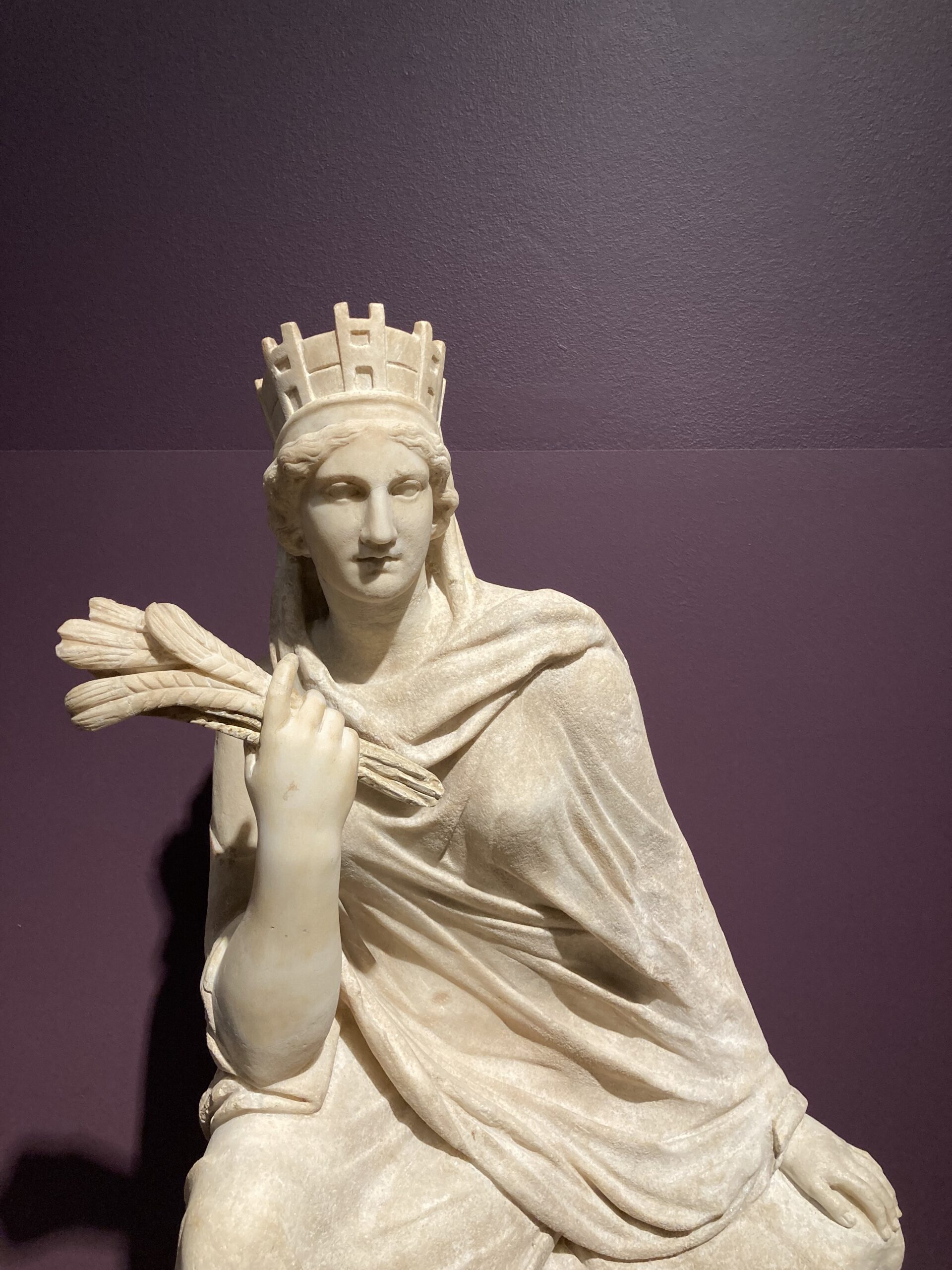
§ 88 And he (Seleucus), riding with his gaze fixed upward, was guided to Emathia by the flight of the bird. The eagle, descending there, placed the offerings on the altar of Zeus Bottiaios, which had been founded by Alexander, when the spring refreshed him; and it seemed to all, even to those not skilled in augury, that Zeus was advising that a city be built on the place. Thus Alexander’s original desire for a settlement, and his beginning of the undertaking, moved toward completion; and the chief of the gods became our founder through his prophetic sign. § 89 Then Seleucus collected artisans representing every skill, all sources of labor for assistance, and all the finest possible stones. Forests were cut down for roofs, and wealth was poured into the work of building. § 90 Outlining the city, he stationed the elephants at intervals, at the places where the towers were to be, and to mark out the length and breadth of colonnades and side streets he used, for the dividing lines, wheat which had been brought by ships which stood in the river. § 91 And quickly the city rose; and quickly what was built was filled with those who came down to the city from Ione, Argives and Cretans and the descendants of Herakles – who were, I believe, related to Seleucus through Temenus of old – and with the soldiers who followed Seleucus, who chose this place for their home… Antioch, one of the great cities of the ancient world, owes its foundation to the vision and divine guidance of Seleucus I Nicator, as vividly recounted by Libanius in his Oration In Praise of Antioch. Does the Vatican’s statue of The Tyche of Antioch truly capture the grandeur and spirit of this legendary city? https://topostext.org/work/789
Antioch, founded in 300 BC by Seleucus I Nicator, one of Alexander the Great’s generals, quickly became one of the most important cities of the ancient world. Strategically located on the Orontes River near the Mediterranean, it served as a critical hub connecting the East and the West. Seleucus named the city after his father, Antiochus, and established it as the capital of the Seleucid Empire. Known for its diverse population, including Greeks, Jews, and Syrians, Antioch was a melting pot of cultures and religions, fostering a vibrant intellectual and artistic community. The city’s grand architecture, with colonnaded streets, aqueducts, and public baths, reflected its wealth and status. Its significance grew under Roman rule, becoming the empire’s third-largest city and earning the nickname Queen of the East due to its prosperity and cosmopolitan character.
Antioch was also a vital center of early Christianity. It is where followers of Jesus were first called “Christians” and where significant missionary activities, including those of Paul and Barnabas, were launched. The city played a crucial role in the spread of Christianity across the Roman Empire. Despite its cultural and spiritual prominence, Antioch faced numerous challenges, including devastating earthquakes and invasions. It declined after the Muslim conquest in the 7th century Ad but remained a key regional city. Today, Antioch’s legacy endures as a symbol of ancient urban innovation, religious significance, and cultural integration, echoing its storied past as one of antiquity’s greatest cities.

of the 3rd century BC) detail, 1st-2nd cent AD, Marble, Height: 0.89 m, Galleria dei Candelabri, Musei Vaticani https://commons.wikimedia.org/wiki/File:The_Tyche_of_Antioch._Marble,_
Roman_copy_after_a_Greek_bronze_original_by_Eutychides_of_the_
3rd_century_BC,_Galleria_dei_Candelabri,_Vatican_Museums_02.jpg

of the 3rd century BC) detail, 1st-2nd cent AD, Marble, Height: 0.89 m, Galleria dei Candelabri, Musei Vaticani https://commons.wikimedia.org/wiki/File:The_Tyche_of_Antioch._Marble,_
Roman_copy_after_a_Greek_bronze_original_by_Eutychides_of_the_
3rd_century_BC,_Galleria_dei_Candelabri,_Vatican_Museums_02.jpg
Slightly after 300 BC, the Greek sculptor Eutychides of Sicyon, famous student of Lysippos, crafted a monumental statue of the Tyche of Antioch. The statue presented a woman, the striking personification of the city, depicted seating on a rock with a turreted crown symbolizing her fortified walls and urban strength. At her feet flowed the river Orontes, represented as a youthful figure reclining, emphasizing the city’s strategic location and life-giving waters. The statue’s innovative design, blending allegory with urban identity, left a profound mark on ancient art. It became an enduring icon, inspiring countless replicas and adaptations in various scales and materials for over 500 years. These copies spread throughout the Hellenistic and Roman worlds, testifying to the statue’s artistic brilliance and Antioch’s cultural prestige. The original statue by Eutychides has been lost to history, but its legacy endures through Roman-era copies, the most famous of which is preserved in the Vatican Museums, ensuring that Eutychides’ vision continues to captivate modern audiences as a symbol of fortune, ingenuity, and the enduring legacy of a legendary city.
The Vatican statue of The Tyche of Antioch beautifully reflects Libanius’s account of the city’s foundation, highlighting themes of divine guidance, careful planning, and prosperity. Libanius describes how Seleucus, guided by Zeus through an eagle, built Antioch with divine approval, blending human effort with celestial will. This connection is seen in the statue, where Tyche wears a crown shaped like the city’s walls, symbolizing divine protection. Libanius’s mention of elephants marking towers and wheat outlining streets mirrors the precision and care seen in Eutychides’s design. The river Orontes at Tyche’s feet emphasizes the river’s importance to Antioch’s layout and economy. Together, the statue and Libanius’s story celebrate the union of nature, divine will, and human ingenuity that made Antioch a legendary city, embodying its historical and artistic significance.
For a Student Activity inspired by the Vatican Tyche of Antioch, please… Check HERE!
